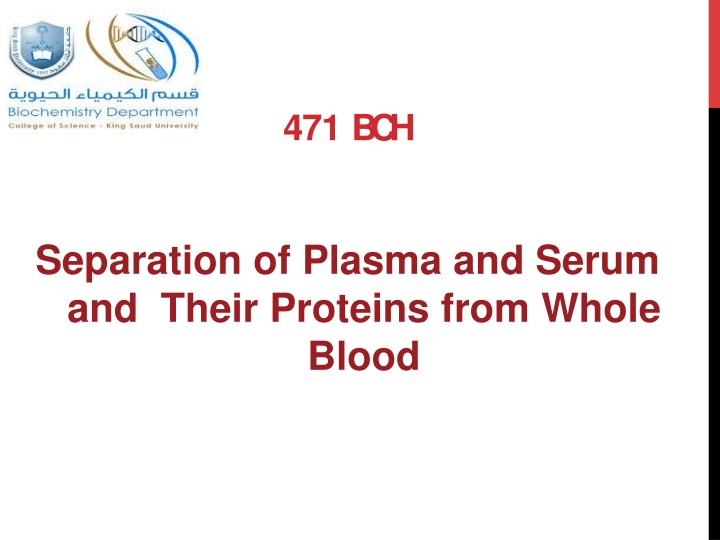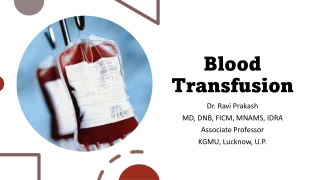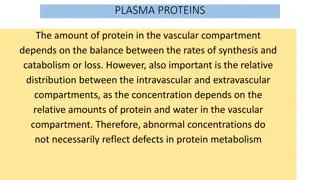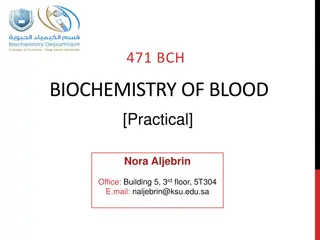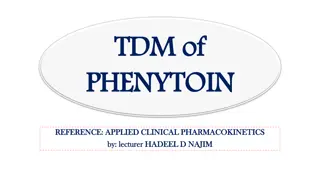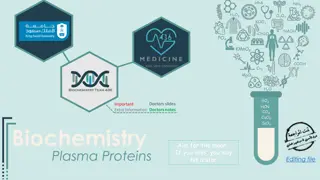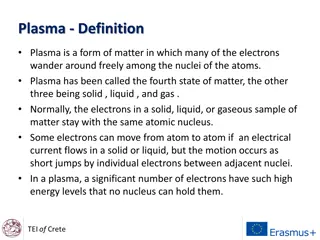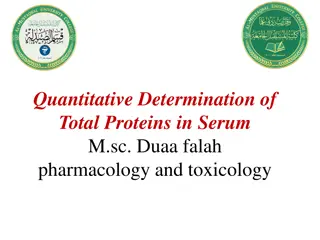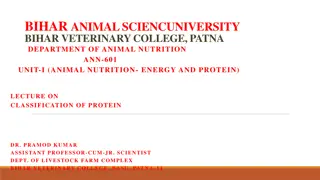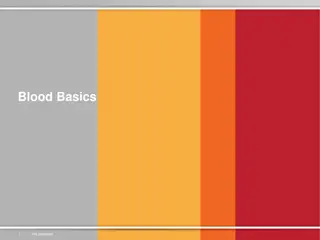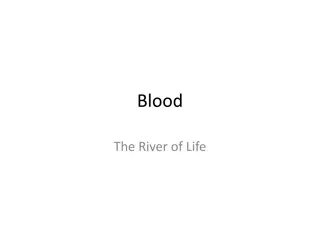Overview of Blood Plasma and Serum Proteins Separation
This content provides insights into the separation of plasma and serum proteins from whole blood, including the use of anticoagulants, centrifugation techniques, and common lab tests. It also discusses the synthesis of plasma proteins and the implications of changes in blood composition. Understand the significance of serum albumin and globulin levels in various health conditions.
Download Presentation

Please find below an Image/Link to download the presentation.
The content on the website is provided AS IS for your information and personal use only. It may not be sold, licensed, or shared on other websites without obtaining consent from the author.If you encounter any issues during the download, it is possible that the publisher has removed the file from their server.
You are allowed to download the files provided on this website for personal or commercial use, subject to the condition that they are used lawfully. All files are the property of their respective owners.
The content on the website is provided AS IS for your information and personal use only. It may not be sold, licensed, or shared on other websites without obtaining consent from the author.
E N D
Presentation Transcript
471 BCH Separation of Plasma and Serum and Their Proteins from Whole Blood
Separationof Centrifuged to precipitate fibrinogen results in P Plas lasma ma S erum Blood has been treated with Blood has been clotted prior to anticoagulants to prevent centrifugation usually in a red top clotting and permitted to stand tube with no additives or or centrifuged in a container anticoagulant. Note: Serum is preferred for many tests (e.g. determination of lactate dehydrogenase) as the anticoagulants in plasma can sometimes interfere with the results.
Collection Collection of If whole blood or plasma is desired, an anticoagulant must be added to the specimen. of Blood Blood Specimens Specimens Tube Cap Color Additive Function of Additive Common Lab Tests It inhibits the formation of thrombin from prothrombin and thus preventing the formation of fibrin. It is a chelating agent, it binds calcium, which is essential for the clotting mechanism. -Routine Chemistry Tests -Cytogenetic Green Heparin -Hematology -Molecular Tests Purple EDTA Coagulation Test It inhibits blood coagulation by converting calcium into a non- ionized form, and hence prevent clotting of blood. It inhibits blood coagulation by forming insoluble complexes with calcium ions. Light Blue Sodium Citrate -Preserve glucose in whole blood Dark Gray Potassium Oxalate -Some Chemistry Tests. It has been used chiefly as a preservative since it inhibits red cell metabolism and bacterial action. Light Gray Sodium Fluoride
Changes Changes in in Blood Blood on onKeeping Keeping Loss of carbon dioxide. Conversion of glucose to lactic acid (glycolysis). Increase in plasma inorganic phosphate. Formation of ammonia from nitrogenous substances. Passage of substances through the red cell envelope. Conversion of pyruvate into lactate.
Site of synthesis Gamma globulin (immunoglobulin) are made by B cells All plasma proteins are synthesized in the liver except Note: All plasma proteins are water soluble
A low serum albumin may be due to: A heavy loss of albumin in urine. Loss or mal-absorption of protein from the digestive tract. Decreased formation by the liver due to defective liver. Increase catabolism of protein or due to insufficient intake of protein in diet. A high serum globulin occurs commonly in: Advanced liver disease. multiple myeloma. number of chronic infections.
Serum and plasma proteins can be separated from each other by: Ultracentrifugation Saltingout Chromatography Electrophoresis
